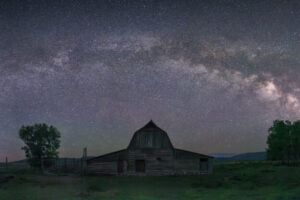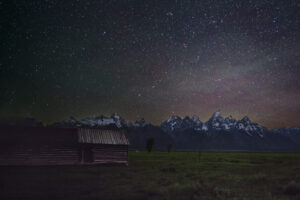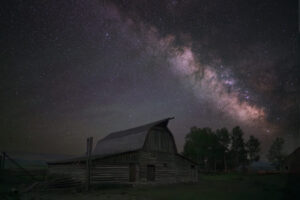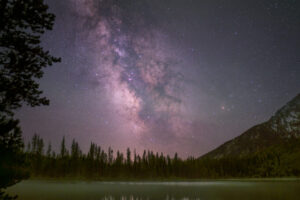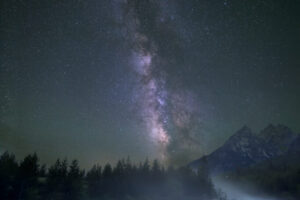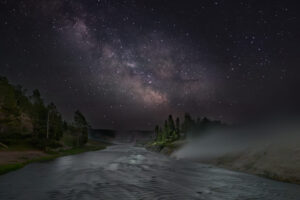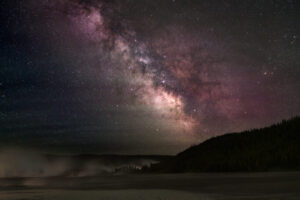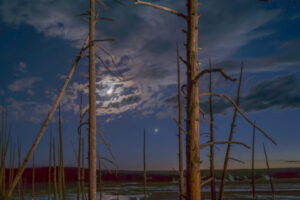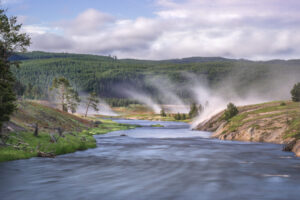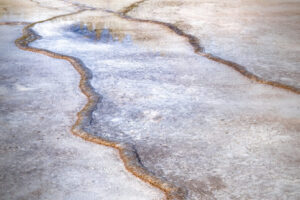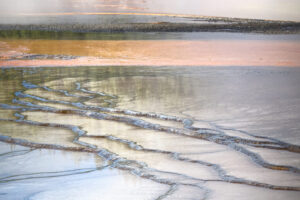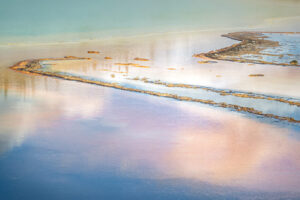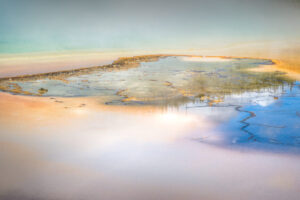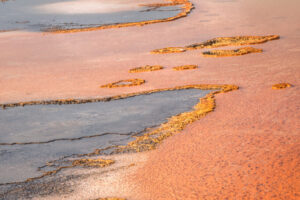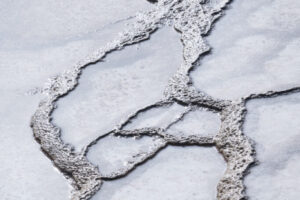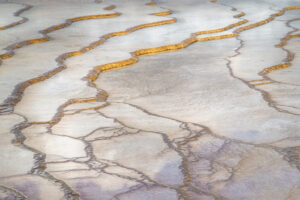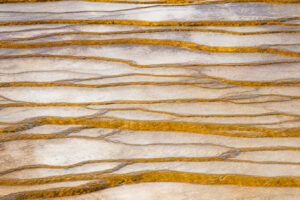The raw beauty of Grand Teton and Yellowstone National Parks is beyond compare. These neighboring parks offer a wealth of photographic opportunities, from towering mountain peaks to otherworldly geothermal features.
In Grand Teton National Park, the jagged silhouette of the Teton Range dominates the skyline, providing a dramatic backdrop for landscape shots. The park’s pristine lakes, like Jenny and Jackson, offer perfect reflections of the mountains, especially during the golden hour. However, the real magic happens after dark: the Tetons’ remote location and minimal light pollution make it ideal for astrophotography.
Yellowstone, with its diverse landscapes and geothermal wonders, presents a different set of photographic challenges and rewards. The crown jewel for many photographers is Grand Prismatic Spring, a massive hot spring known for its vivid rainbow hues. Shooting from the nearby overlook allows you to capture the spring’s full scale and kaleidoscopic beauty, especially at midday when the sun is high.
Of course, no trip to Yellowstone is complete without photographing its famous geysers. Old Faithful is the most predictable, but lesser-known geysers like Grand or Steamboat offer equally spectacular eruptions with fewer crowds. Ini addition, night photography in Yellowstone yields images such as star trails over steaming geothermal features and the Milky Way reflected in a still mountain lake.
One constant challenge in both parks is the changeable weather: conditions can shift rapidly, from clear skies one minute to dramatic thunderstorms the next. While this can be frustrating, it also presents opportunities for capturing dynamic, moody images.
Both Grand Teton and Yellowstone National Parks offer endless inspiration for photographers willing to brave the elements or stay up late for the perfect shot.
- Milky Way Over Moulton Barn I Teton National Park | June 2023
- Tetons at Night Teton National Park | June 2023
- Milky Way Over Moulton Barn II Teton National Park | June 2023
- Milky Way Over String Lake Teton National Park, Wyoming | June 2023
- Milky Way Over Jackson Lake Dam Teton National Park | June 2023
- Yellowstone Milky Way Yellowstone National Park | June 2023
- Grand Prismatic Milky Way Grand Prismatic Spring, Yellowstone National Park | June 2023
- Trees By Moonlight Yellowstone National Park | June 2023
- Cauldron By Moonlight Yellowstone National Park | June 2023
- Geyser Moon Yellowstone National Park | June 2023
- Steaming River Yellowstone National Park | June 2023
- Grand Prismatic I Grand Prismatic Spring, Yellowstone National Park | June 2023
- Grand Prismatic II Grand Prismatic Spring, Yellowstone National Park | June 2023
- Grand Prismatic III Grand Prismatic Spring, Yellowstone National Park | June 2023
- Grand Prismatic IV Grand Prismatic Spring, Yellowstone National Park | June 2023
- Grand Prismatic IV Grand Prismatic Spring, Yellowstone National Park | June 2023
- Grand Prismatic V Grand Prismatic Spring, Yellowstone National Park | June 2023
- Grand Prismatic VI Grand Prismatic Spring, Yellowstone National Park | June 2023
- Grand Prismatic VII Grand Prismatic Spring, Yellowstone National Park | June 2023
- Grand Prismatic VIII Grand Prismatic Spring, Yellowstone National Park | June 2023

